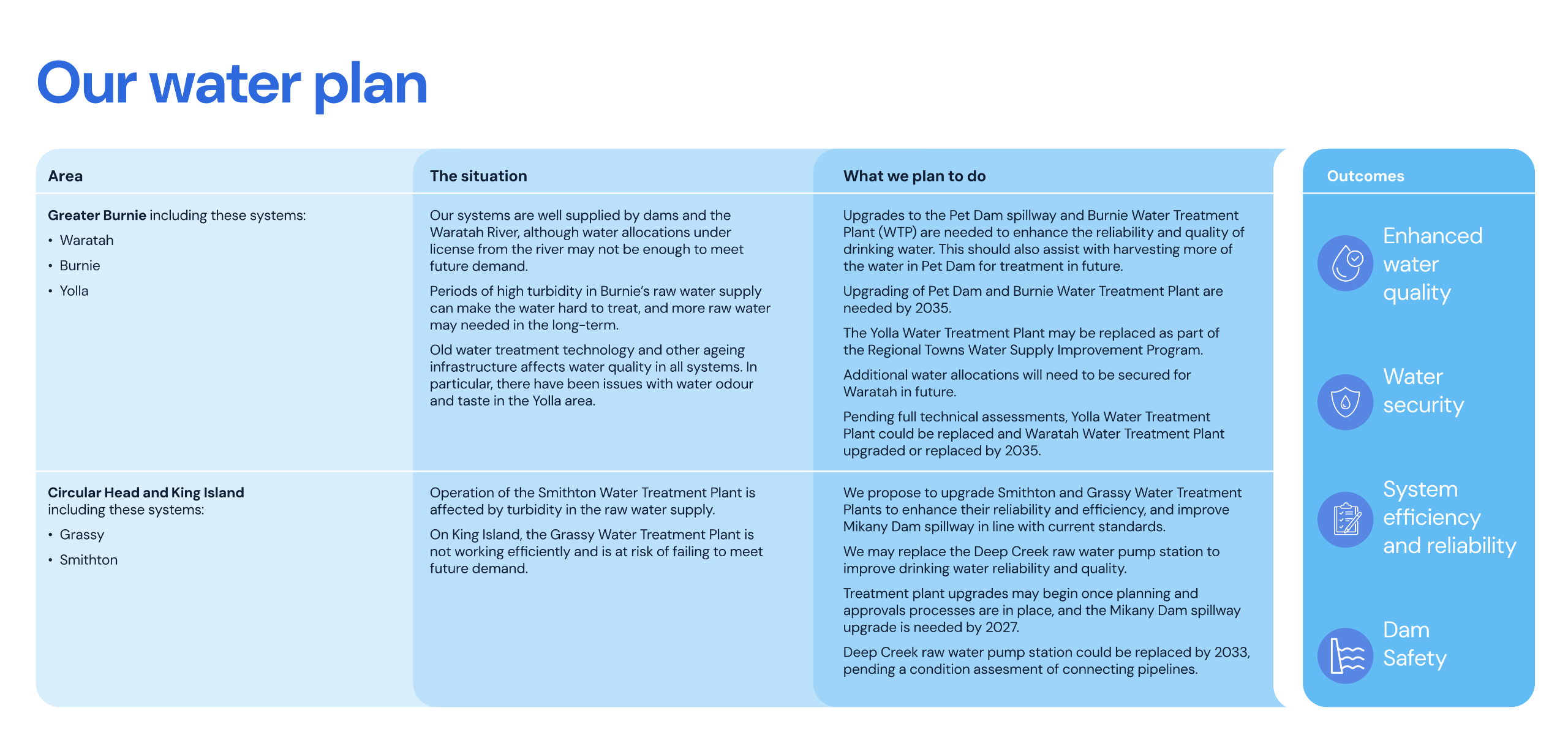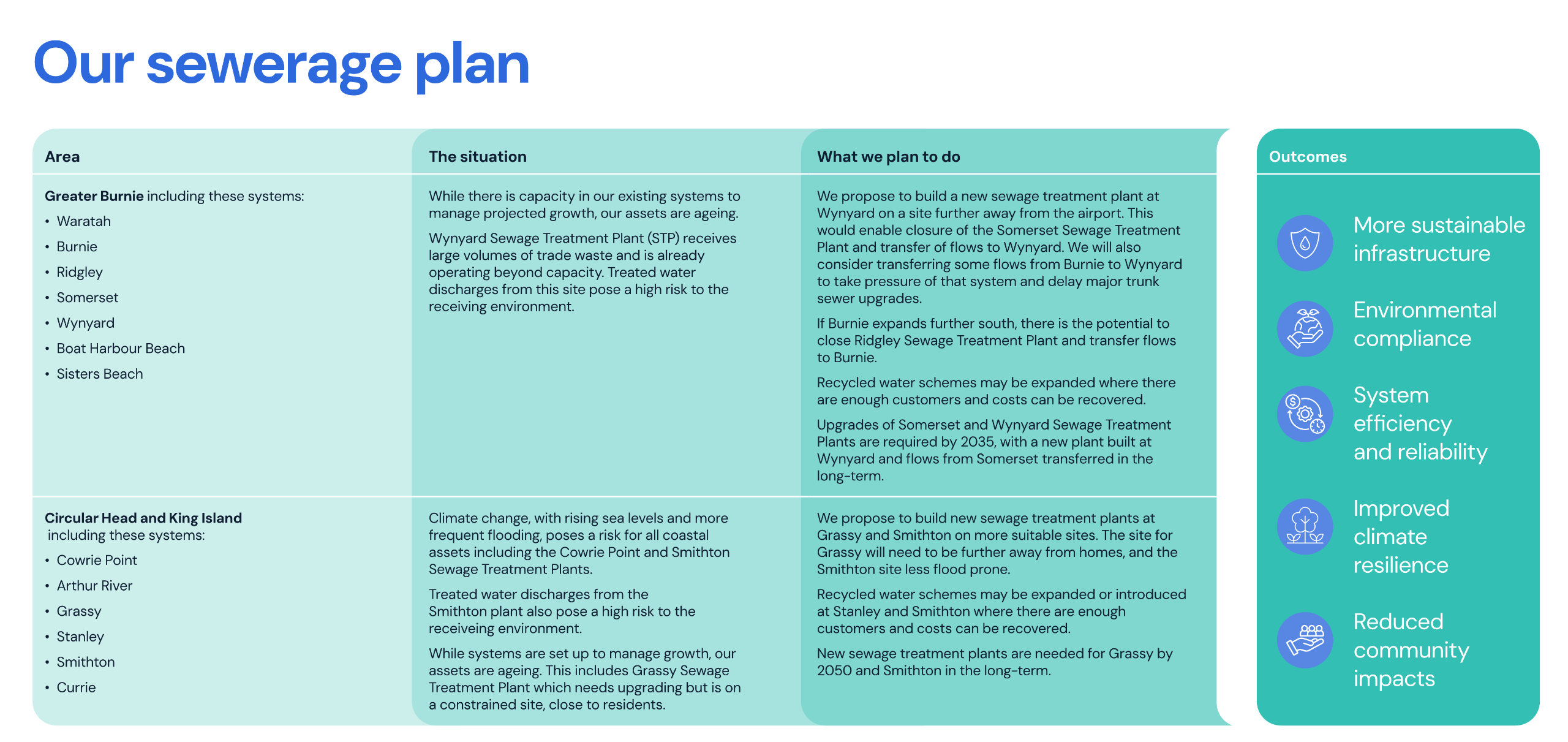Current services
The region has 5 water and 13 sewerage systems plus a recycled water scheme supporting residents, farms, and major processors in Wynyard and Smithton. Aging, underinvested infrastructure and rising expectations drive upgrades like Smithton’s main pump station to reduce overflow risk and support growth. Many smaller towns also need investment to cut environmental impact and meet future demand, forming part of our long-term plan.









